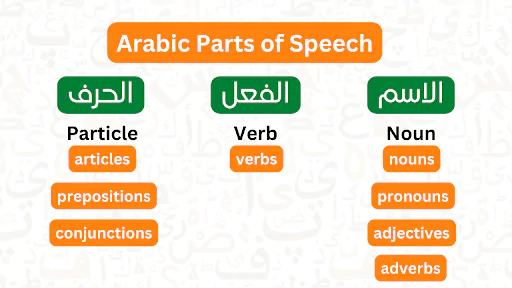5 Arabic Learning Challenges and How to Overcome Them

You probably heard the following line hundreds of times before: Arabic is a beautiful language with a rich history but it’s very difficult to learn. So as an Arabic learner the greatest and first challenge for you is to change your perspective and fight this conception suggesting that learning Arabic is nearly impossible or overwhelming task.
With dedication, guidance, and the right resources, you can unlock the beauty of this language and pass the Arabic Proficiency Test like hundreds who do it every year.
In this blogpost, we are breaking down the challenges surrounding the Arabic language and suggesting solutions for them.
Our suggestions are based on a study conducted by Elise Hagan, Ahlan Alexandria intern, who asked 60 Ahlan students: Which aspects of Arabic learning have you found most difficult?
1- Arabic Script
To be honest, your struggle with reading and writing the Arab script is Understandable.
Unlike English, Arabic letters are not written separated they are written in a cursive style and read from right to left. Many letters look similar but distinguished from one another by dots like the letters (ب,ت,ث ) or (ج,ح,خ), (د,ذ), (ر,ز), (ص,ض), (ط,ظ), (ع,غ).
But don’t let the fact that they are different put you off.
Learning the Arabic script might be a challenge but it’s far from impossible. To overcome this challenge here are some tips:
- Invest time to master writing each letter separately and memorizing its sound.
- Make sure you write in the right direction and stroke. Most Arabic letters require only one stroke before adding the dots.
- Once you master writing the letters isolated, start to learn the different forms of each letter dependig on the form. There are four forms of each letter. In the following example we showcase the letter خ
- Initial form: خـ
- Middle form: ـخـ
- Final form: ـخ
- Isolated form: خ
- After that, start using the letters in all their forms in short, easy to learn words.
With dedication and the right time invested you will be able to write with flow.
2- Diglossia
3- Pronunciation
Another significant challenge in Arabic is pronunciation. Arabic has many sounds that do not exist in English, which makes it difficult for learners to pronounce Arabic words correctly. Additionally, the pronunciation of a word can change depending on the position of the letters within the word. Arabic has also some sounds that are not distinguishable by English speakers, like the two “ayns” (ع), which require some training to get them right.
To overcome this challenge, you need to practice your pronunciation regularly. Listen to native Arabic speakers and imitate their pronunciation. You can also use online resources that provide audio recordings of Arabic words and sentences. It’s best to start with simple words and practice the correct pronunciation of each letter.
4- Vocabulary
Arabic has a vast vocabulary that includes many words with similar meanings. Learners may find it challenging to memorize Arabic words and use them correctly in context. Additionally, Arabic has many words that have different meanings depending on the context in which they are used.
Check out our Vocabulary lists with audios
To overcome this challenge, it is essential to build your Arabic vocabulary gradually. Start by learning the most common Arabic words and phrases used in everyday conversations. You can also use flashcards and online resources that provide Arabic vocabulary lists and exercises.
Some apps provide series of vocabulary with audio in all aspects of life. If you dedicate time and set a goal to practice and memorize let’s say 10 words a day, and keep it as a habit, you will gain much vocabulary every day.
5- Grammar
- Understanding the Arabic parts of speech is essential as it forms the foundation for learning Arabic grammar. There are 3 parts of speech in Arabic.
- Working with simple sentences:Now that you explored the important details about Arabic nouns and verbs, it’s time to learn how to combine them. Working with simple sentences is a great way for beginners in any language to become familiar with the basics of Arabic grammar. It helps you see how words fit together in context to create meaningful ideas.
- Learning by reverse: learning phrases instead of rules has the advantage of allowing you to pick up on patterns and understand the rules for yourself. It will enable you to comprehend the language’s structure more effectively.
- Focus on one case at a time: To develop a strong grasp of Arabic grammar, it is advisable to learn one of the three Arabic cases separately. Let’s begin with the nominal case (المرفوع), which is used for the subject of a sentence. For instance, consider the phrase “الكتاب جديد” (al-kitāb jadīd), meaning “The book is new.” Here, “الكتاب” (al-kitāb) serves as the subject, in its nominative form. Master this case by using as many sentences as possible. By doing so, you will form a deeper understanding of the case, then you can move to the next one.
Check out our grammar lessons.
In conclusion,learning Arabic comes with its fair share of challenges, However, with dedication, perseverance, and the right learning strategies, these challenges can be overcome.
Remember that every small step forward counts, and with time, you will make significant progress in your Arabic language journey.






 Previous Post
Previous Post Next Post
Next Post



